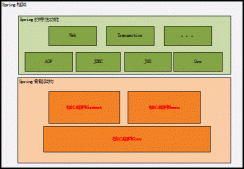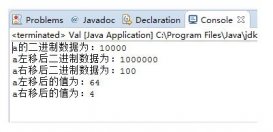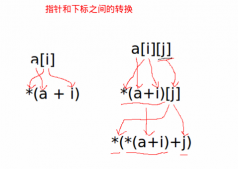1. 查询
除了单条记录的查询,这里我们来尝试查询一组记录。
IUserMapper接口添加下面方法:
|
1
|
List<User> getUsers(String name); |
在User.xml中添加:
|
1
2
3
4
5
6
7
8
9
10
|
<resultMap type="User" id="userList"><!-- type为返回列表元素的类全名或别名 --> <id column="id" property="id" /> <result column="name" property="name" /> <result column="age" property="age" /> <result column="address" property="address" /> </resultMap> <select id="getUsers" parameterType="string" resultMap="userList"><!-- resultMap为上面定义的User列表 --> select * from `user` where name like #{name} </select> |
测试方法:
|
1
2
3
4
5
6
7
8
9
10
11
12
13
|
@Testpublic void queryListTest() { SqlSession session = sqlSessionFactory.openSession(); try { IUserMapper mapper = session.getMapper(IUserMapper.class); List<User> users = mapper.getUsers("%a%"); // %在sql里代表任意个字符。 for (User user : users) { log.info("{}: {}", user.getName(), user.getAddress()); } } finally { session.close(); } } |
如果联表查询,返回的是复合对象,需要用association关键字来处理。
如User发表Article,每个用户可以发表多个Article,他们之间是一对多的关系。
(1) 创建Article表,并插入测试数据:
|
1
2
3
4
5
6
7
8
9
10
11
12
13
14
15
16
17
18
19
|
-- Drop the table if exists DROP TABLE IF EXISTS `Article`; -- Create a table named 'Article' CREATE TABLE `Article` ( `id` int NOT NULL AUTO_INCREMENT, `user_id` int NOT NULL, `title` varchar(100) NOT NULL, `content` text NOT NULL, PRIMARY KEY (`id`) ) ENGINE=InnoDB AUTO_INCREMENT=1 DEFAULT CHARSET=utf8; -- Add several test records INSERT INTO `article` VALUES('1', '1', 'title1', 'content1'), ('2', '1', 'title2', 'content2'), ('3', '1', 'title3', 'content3'), ('4', '1', 'title4', 'content4'); |
(2) com.john.hbatis.model.Article类:
|
1
2
3
4
5
6
7
|
public class Article { private int id; private User user; private String title; private String content; // Getters and setters are omitted } |
(3) 在IUserMapper中添加:
|
1
|
List<Article> getArticlesByUserId(int id); |
(4) 在User.xml中添加:
|
1
2
3
4
5
6
7
8
9
10
11
12
13
14
15
16
17
18
|
<resultMap type="com.john.hbatis.model.Article" id="articleList"> <id column="a_id" property="id" /> <result column="title" property="title" /> <result column="content" property="content" /> <association property="user" javaType="User"><!-- user属性映射到User类 --> <id column="id" property="id" /> <result column="name" property="name" /> <result column="address" property="address" /> </association> </resultMap> <select id="getArticlesByUserId" parameterType="int" resultMap="articleList"> select u.id, u.name, u.age, u.address, a.id a_id, a.title, a.content from article a inner join user u on a.user_id=u.id and u.id=#{id} </select> |
(5)测试方法:
|
1
2
3
4
5
6
7
8
9
10
11
12
13
|
@Testpublic void getArticlesByUserIdTest() { SqlSession session = sqlSessionFactory.openSession(); try { IUserMapper mapper = session.getMapper(IUserMapper.class); List<Article> articles = mapper.getArticlesByUserId(1); for (Article article : articles) { log.info("{} - {}, author: {}", article.getTitle(), article.getContent(), article.getUser().getName()); } } finally { session.close(); } } |
附:
除了在association标签内定义字段和属性的映射外,还可以重用User的resultMap:
|
1
|
<association property="user" javaType="User" resultMap="userList" /> |
2. 新增
IUserMapper接口添加下面方法:
int addUser(User user);
User.xml添加:
|
1
2
3
|
<insert id="addUser" parameterType="User" useGeneratedKeys="true" keyProperty="id"><!-- useGeneratedKeys指定myBatis使用数据库自动生成的主键,并填充到keyProperty指定的属性上。如果未指定,返回对象拿不到生成的值 --> insert into user(name,age,address) values(#{name},#{age},#{address}) </insert> |
测试方法:
|
1
2
3
4
5
6
7
8
9
10
11
12
13
|
@Testpublic void addUserTest() { User user = new User("Lucy", 102, "Happy District"); SqlSession session = sqlSessionFactory.openSession(); try { IUserMapper mapper = session.getMapper(IUserMapper.class); int affectedCount = mapper.addUser(user); session.commit(); // 默认为不自动提交。调用session.getConnection().getAutoCommit()查看 log.info("{} new record was inserted successfully whose id: {}", affectedCount, user.getId()); } finally { session.close(); } } |
3. 更新
接口添加方法:
|
1
|
int updateUser(User user); |
User.xml添加:
|
1
2
3
4
|
<update id="updateUser" parameterType="User"> update `user` set name=#{name}, age=#{age}, address=#{address} where id=#{id} </update> |
测试方法:
|
1
2
3
4
5
6
7
8
9
10
11
12
13
14
|
@Testpublic void updateUserTest() { SqlSession session = sqlSessionFactory.openSession(); try { IUserMapper mapper = session.getMapper(IUserMapper.class); User user = mapper.getUserById(8); user.setAddress("Satisfied District"); int affectedCount = mapper.updateUser(user); // 除了要修改的属性外,user的其它属性也要赋值,否则这些属性会被数据库更新为初始值(null或0等),可以先查询一次,但这样会增加和数据库不必要的交互。后面的条件判断能避免此问题。 log.info("Affected count: {}", affectedCount); session.commit(); } finally { session.close(); } } |
4. 删除
接口添加方法:
|
1
|
int deleteUser(int id); |
User.xml添加:
|
1
2
3
|
<delete id="deleteUser" parameterType="int"> delete from `user` where id=#{id} </delete> |
测试方法:
|
1
2
3
4
5
6
7
8
9
10
11
12
|
@Testpublic void deleteUserTest() { SqlSession session = sqlSessionFactory.openSession(); try { IUserMapper mapper = session.getMapper(IUserMapper.class); int affectedCount = mapper.deleteUser(8); log.info("Affected count: {}", affectedCount); session.commit(); } finally { session.close(); } } |















